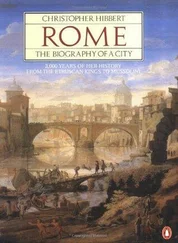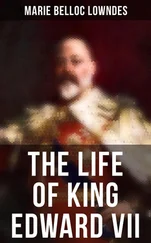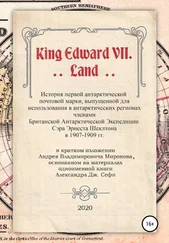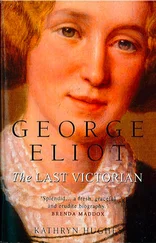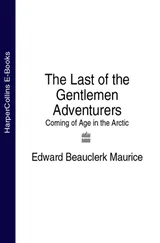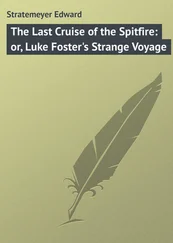He was wearing a uniform expertly made for him by Henry Poole of Savile Row and the insignia of a general, a rank to which he had been promoted on his twenty-first birthday. The cloak of the Order of the Garter hung from his shoulders and its gold collar round his neck. As he waited at the altar with his brother-in-law, the Crown prince of Prussia, on one side and his uncle, the somewhat mollified Duke of Coburg, on the other, he was seen to cast a series of nervous glances at the gallery where his mother sat with her ladies. She was ‘agitated and restless’, Lady Augusta recorded, moving her chair, putting back her long streamers, asking questions of the Duchess of Sutherland. Her expression was ‘profoundly melancholy’. When the organ played the first anthem and Jenny Lind sang in the chorale which had been composed by Prince Albert, Charles Kingsley, one of the Queen’s Chaplains in Ordinary, who was ‘exactly opposite to her the whole time’, saw her throw back her head and look ‘up and away with a most painful’ expression on her face. Norman McLeod, a Dean of the Chapel Royal, who was standing next to Kingsley, touched him on the arm, and, with tears in his eyes, whispered in his ‘broad Scotch’, ‘See, she is worshipping him in spirit!’
McLeod drew Kingsley’s attention also to the bridegroom’s sisters, for ‘the blessed creatures’ were all crying. As Kingsley’s daughter, Rose, reported on her parents’ evidence, the Princess Royal had burst out crying ‘as soon as the Prince of Wales came up to the Altar’. And this ‘set Princess Alice (who looked quite beautiful) and all her sisters off crying and blubbering too: but it was only from affection and they soon recovered themselves’.
The bride, on the other hand, was still quite controlled and ‘perfectly lovely’, walking demurely down the chapel on her father’s arm, casting her eyes down shyly when — twenty minutes late — she reached the altar, but raising them from time to time to look at the Archbishop of Canterbury and the Bishops of London, Oxford, Winchester and Chester, who were assisting him in the service. Mrs Kingsley thought it rather absurd that the Archbishop considered it necessary to repeat the bride’s names in groups, as though the Prince had ‘not known the Princess long enough to say all her six names off at a breath’. Other guests were rather shocked by the way the Knights of the Garter hurried down the aisle in a kind of gaggle instead of proceeding decorously two by two. There was only one really embarrassing moment, however; and that was when the bridegroom’s four-year-old nephew, the future Kaiser Wilhelm II, who was wearing Highland dress, decided to enliven the proceedings by trying to throw the cairngorm from the head of his dirk across the choir. He had already caused great consternation by hurling his aunt’s muff out of the carriage window and by addressing the Queen familiarly as ‘Duck’. He now created further disturbance by turning on his uncles, Prince Alfred and Prince Leopold, who tried to restrain his bad behaviour in the chapel, and by biting them both as hard as he could on their legs.
Yet everyone agreed that, although the nine hundred guests were excessively cramped and the ceremonial might have been better rehearsed, the wedding was a great success. William Powell Frith, who had been asked to paint the scene, found the colour of the uniforms, the glitter of the diamonds, the mediaeval costumes of the heralds and the Yeomen of the Guard an inspiration. The Bishop of Oxford professed that he had never seen a more moving sight. And Disraeli, who had been seated immediately opposite Gladstone and had been further discomfited by having received a frigid glance from the Queen for raising his eye-glass in the direction of her closet, thought it ‘a fine affair, a thing to remember, a perfect pageant’, the only pageant, in fact, which had not disappointed him — ‘the beautiful chapel, the glittering dresses, the various processions … the heralds, the announcing trumpets, the suspense before the procession appeared, the magnificent music …’
After the ceremony a luncheon was held for the royal guests, but the Queen did not attend it, preferring still to eat alone. Afterwards, at about four o’clock, from a window in the Grand Corridor, she watched the bridal carriage set off for Windsor Station. Disraeli told Mrs Willyams that the Queen had been
very anxious that an old shoe should be thrown at the royal pair on their departure, and the Lord Chamberlain showed me in confidence the weapon with which he had furnished himself. He took out of his pocket a beautiful white satin slipper which had been given him, for the occasion, by the Duchess of Brabant. Alas! When the hour arrived, his courage failed him, and he hustled the fairy slipper into the carriage. This is a genuine anecdote which you will not find in the Illustrated News.
The carriage halted for a moment below the Queen’s window. The Prince of Wales stood up, and both he and his bride looked up at her ‘lovingly’. She hoped that perhaps all would now go well with Bertie though she felt compelled to confess to King Leopold that she had of late found her son ‘a very unpleasant element in the house’ and was ‘very anxious for the result of the marriage’. When the bride and bridegroom and the guests had all gone she walked down the path to the mausoleum at Frogmore, to pray alone, ‘by that blessed resting-place’, and felt ‘soothed and calmed’.
The drive of the bridal carriage through streets thronged with Eton boys was, in contrast, far from calm. One of these excited boys, Lord Randolph Churchill, told his father:
Nothing stood before us. The policemen charged in a body, but they were knocked down. There was a chain put across the road, but we broke that; several old genteel ladies tried to stop me, but I snapped my fingers in their face and cried, “Hurrah!” and “What larks!” I frightened some of them horribly. There was a wooden palisade put up at the station but we broke it down… I got right down to the door of the carriage where the Prince of Wales was, wildly shouting, “Hurrah!” He bowed to me, I am perfectly certain; but I shrieked louder.
Lord Randolph was sure that if the Princess had not possessed ‘very strong nerves she would have been frightened’. But, as when the crowds had got out of hand during her drive through the City three days before, ‘all she did was to smile blandly’.
She continued to smile during the week’s honeymoon at Osborne. ‘It does one good to see people so thoroughly happy as this dear young couple are,’ the Crown Princess reported to the Queen. ‘Darling Alix looks charming and lovely and they both seem so comfortable and at home together. Love has certainly shed its sunshine on these two dear young hearts and lends its unmistakable brightness to both their countenances … As for Bertie he looks blissful. I never saw such a change, his whole face looks beaming and radiant.’
On their return to Windsor the Queen was equally pleased with the look of them both. ‘Alix looked so sweet and lovely at luncheon,’ she recorded the day they arrived back in the castle, ‘and Bertie so brightened up.’ Two days later, as bright as ever, he left Windsor for Buckingham Palace where he and his bride were to stay until their own London house was ready for them.
5
Marlborough House and Sandringham
I fear the Queen is not disposed to let him interfere in public.
The Prince’s London home, Marlborough House in Pall Mall, had been built by Christopher Wren for the first Duke of Marlborough in 1709–10. Reverting to the Crown on the expiry of the lease in 1817 it had been allotted to Princess Charlotte and Prince Leopold. On Princess Charlotte’s death, Prince Leopold, who had continued to live there, had angered King George IV by entering into negotiations for the sale of the lease to Queen Caroline. This had fortunately been prevented and the house had eventually been handed over to Queen Adelaide, who had lived there until her death in 1849. The next year Queen Victoria had asked for an Act of Parliament to be passed assigning the house for the use of the Prince of Wales on his nineteenth birthday; and since then the government had spent £60,000 on modernization and additions which had been carried out under the direction of Sir James Pennethorne.
Читать дальше


